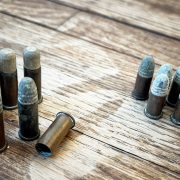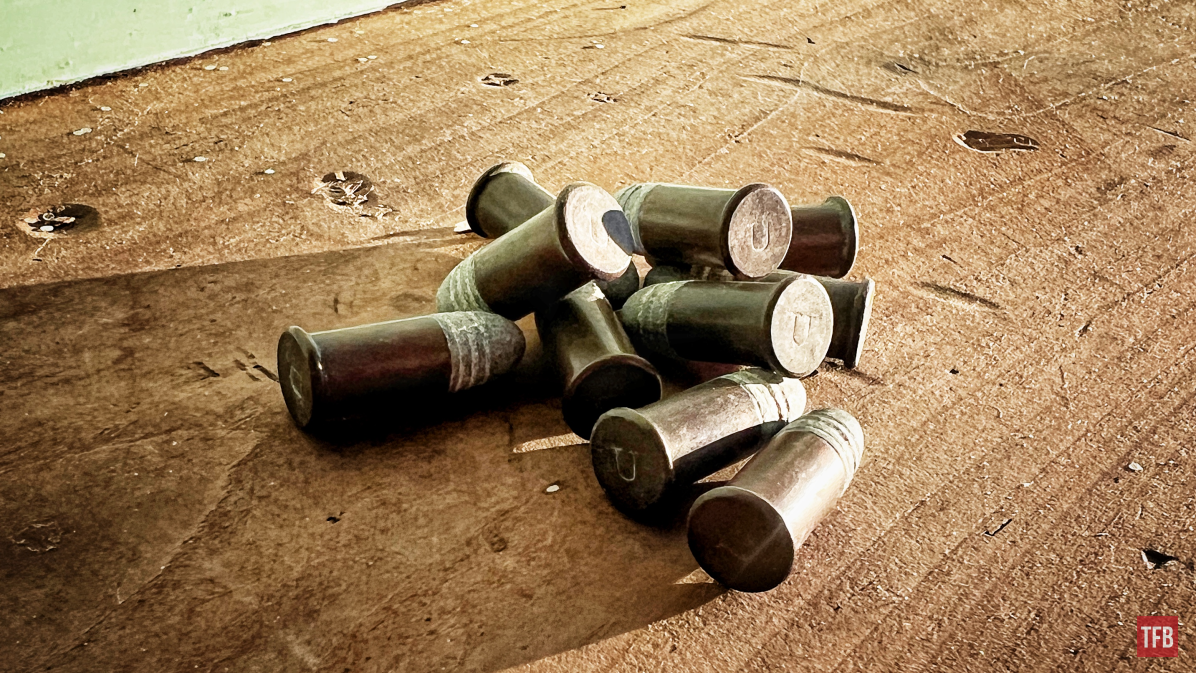Hello and welcome back to another Edition of The Rimfire Report! This ongoing series is all about the rimfire firearm world and its many guns, ammunition choices, and shooting sports. Last time we took a look at one of my 22LR revolvers in The Rimfire Report: J.P. Sauer & Sohn Western Marshal 22LR Review. This week I am at the helm again and filling in for your usual host Luke C. This time I found myself twiddling my thumbs trying to think of a rimfire gun I or anyone else has not yet talked about on this particular stage. Alas, all that I own has been spent. Luckily, once upon a time I received a bag of some very old ammunition, and deep down inside was some 30 Rimfire! Let’s dive into the 30 Rimfire cartridge!
History-Related Rimfire Articles on TFB:
- The Rimfire Report: A Brief History of Rimfire Ammunition
- The Rimfire Report: The Brief History of Gallery Guns
- The Rimfire Report: The Antique $5 Mossberg Brownie Pocket Pistol
- The Rimfire Report: The Obscure .22 Rimfire Tear Gas Cartridge Guns
- The Rimfire Report: Charter Arms Explorer II AR7 Pistol Review
Brief Historical Recap on Rimfire Cartridges
One important thing to remember is that self-contained cartridges were not always a thing. They also did not always look like they do now. Rimfire was an early one but it was by no means the standard or a popular notion until the late 1850s rolled around. All kinds of metallic self-contained cartridges such as pinfire, lipfire, teatfire, and of course rimfire would come about. The beauty was that everyone knew that this was what cartridges were supposed to be but they were all trying their best to win the acceptance of the world! The first rimfire cartridge popped up in 1845 with Frenchman Louis-Nicolas Flobert basically sticking a small 6mm bullet into a percussion cap. The first commercial American rimfire cartridge did not happen until 1857. Can you guess what it was? 22 Rimfire! (not Long Rifle). This was all thanks to Smith & Wesson and their Model 1 Rimfire Revolver.
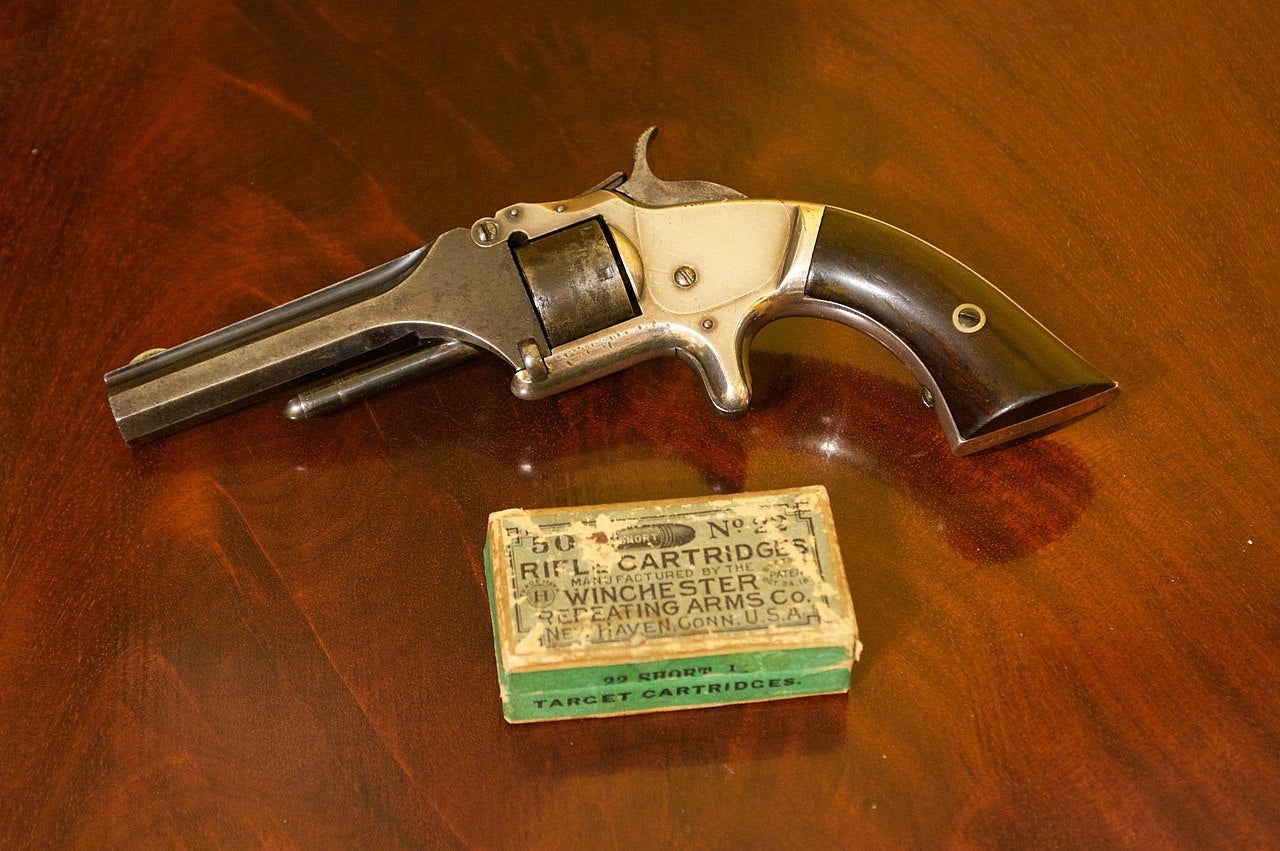
Smith & Wesson No 1. Photo Credit: Wikimedia Commons
Our Star Today: 30 Rimfire
Still sticking in the era of black powder self-contained metallic cartridges 30 Rimfire pops up. This is roughly around 1860. I have not been able to find any information on who exactly “invented” or released it first but what I can tell you is it was mainly made for cheaper pocket guns. These would be guns like the Sharps Model 2 Pepperbox (1859 to 1874), Marlin XXX Standard (1872 to 1887), Remington Smoot (1875 to 1877), and the Colt New Line (30 Rimfire version 1874 to 1876).

Sharps Model 2 Four Barrel Pepperbox. Lot 201: Sharps C & Company Pepperbox Pistol 30 Rf – Very Scarce Factory Engraved Sharps Model 2 Four-Barrel Pepperbox Pistol. (n.d.). Rock Island Auction Company. photograph. Retrieved February 7, 2023, from https://www.rockislandauction.com/detail/60/201/sharps-c-company-pepperbox-pistol-30-rf.
In around 1872 a new 30 Rimfire happened to pop up and it was…longer. This made the 30 Rimfire family distinguishable by the classic terms “short” and “long”. The 30 Rimfire cartridges would normally have a 50 to 58-grain lead projectile (5 to 6 grains of black powder) and be lubricated on the outside. The bullet diameter is said to have been roughly .290 to .295.
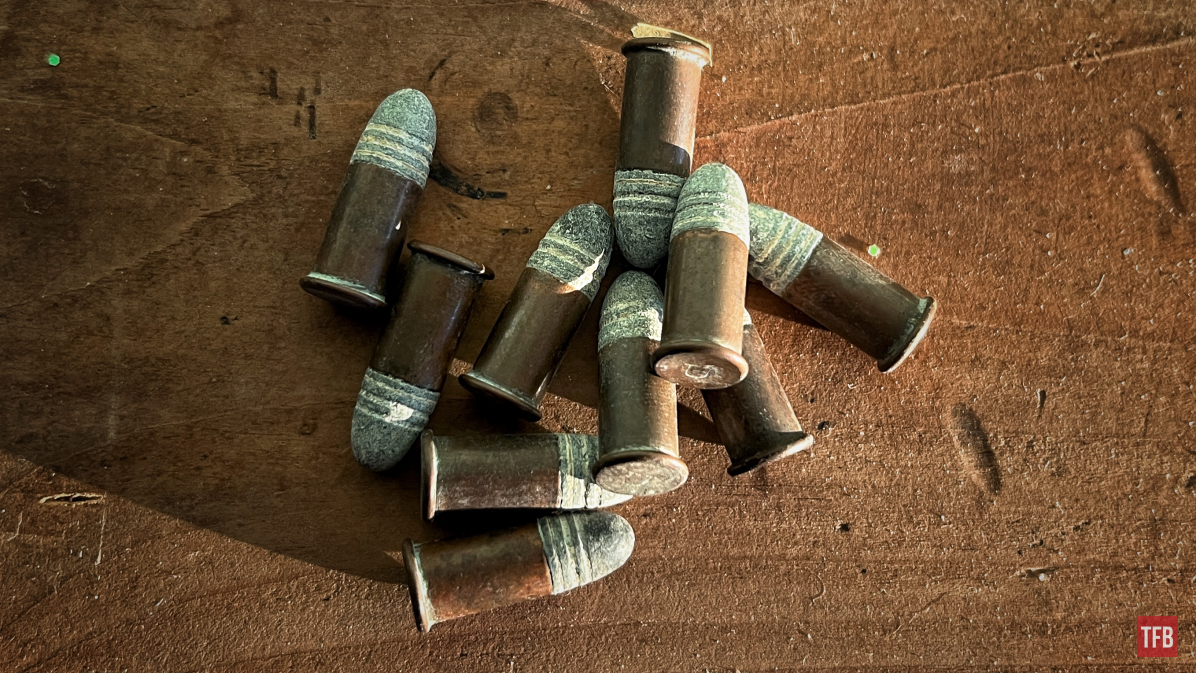
30 Rimfire Short
Note: Some of my 30 Rimfire have what appear to be wooden bullets. For a long time, I had suspected the previous owner stuck a wood dowel in for an empty cartridge with a missing bullet. In reality, I have found that many “shot shells” of the time would have this wooden tip rather than the modern crimp or obviously modern plastic cap. UMC would market them as “Long Shot” cartridges which is kind of funny.
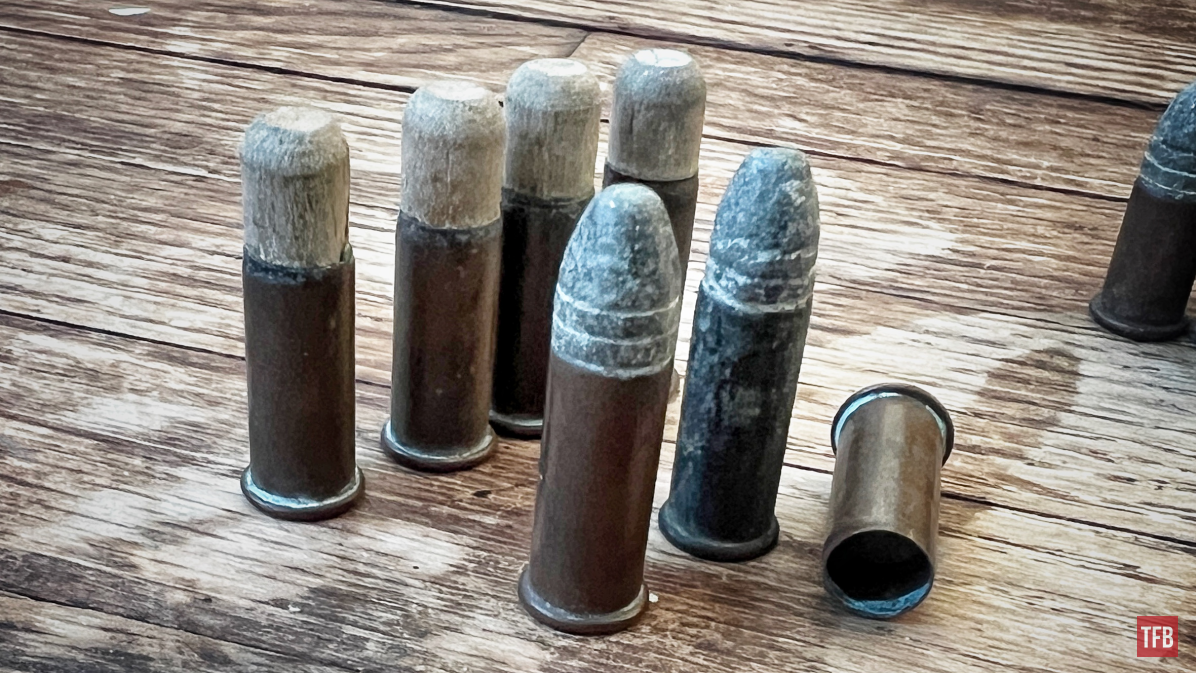
30 Rimfire Long and Shot Cartridges
The demise of the 30 Rimfire cartridges was similar to most. It simply phased out with the wide acceptance of the superior centerfire (and smokeless) cartridges. The main kicker at the time was that the .32 Rimfire cartridge was a much more popular defensive cartridge, especially in those little guns. It would be a similar comparison to 380 ACP being more popular nowadays rather than 32 ACP. Oddly even though it was the newer of the two, the 30 Rimfire Long would fall out of production around the start of World War One (1914) while the 30 Rimfire Short would be produced until as late as 1920. This weird discrepancy is most likely due to 30 Rimfire Long having the same “stopping power” as 32 Rimfire Short.
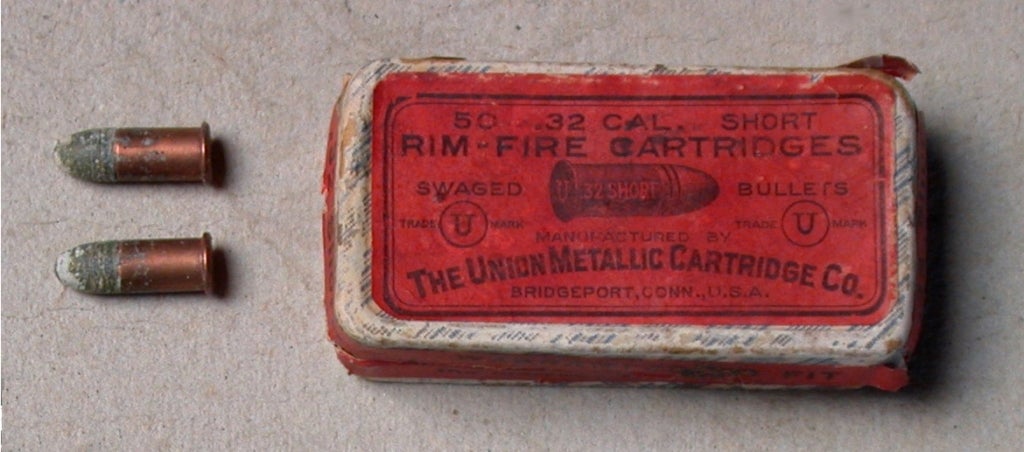
32 Rimfire Short. Photo Credit: Wikimedia Commons
Fun Note: According to my finding, the 30 Rimfire Short and Long examples that I have are some old UMC ammunition. Even cooler is that UMC only made 30 Rimfire Short and Long from 1885 to 1911.
Conclusion: 30 Rimfire
I wish I owned one of those old pocket revolvers or pistols just to pop one of my handful of example ammunition through it. I cannot imagine it would work or at least well since the wax appears to be long disintegrated and the powder is likely inert. It would be an interesting test nonetheless. I imagine there would be next to no recoil and they would be enjoyable to shoot minus the black powder fouling and subsequent cleaning involved. I hope you all enjoyed this little impromptu article on 30 Rimfire. I wish I had a larger wealth of information on the matter. What little information I found was through books so make sure to pick some up when you see some on older firearm stuff if that is your thing like it is mine.
The rimfire lineage is a very large family tree and I suggest you folks go out and seek more information. Better yet, share little tidbits that you may know. It took many hours of research and fact-checking to come up with what little I did on 30 Rimfire. What do you guys and gals think? Thanks as always for stopping by to check out The Rimfire Report and we’ll see you again next week. Hope you folks enjoyed and thank you very much for having me!


